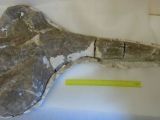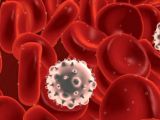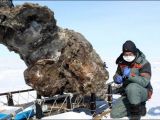Yet another week has gone by, and once again, it’s time to take a few minutes to review the coolest and the most important science news of the past few days.
Plenty of things happened this week, what with researchers’ passion for solving the riddles of our life here on Earth. Still, it was not a scientific discovery that grabbed headlines.
Au contraire, it was one of the universe’s own little achievements. Curious what it was? Well then, keep scrolling (and preferably also reading) and find out.
10. Science-made wine would do away with hangovers
Wine has been around for thousands of years and we humans have loved it this entire time, hence the fact that we’re still making it. However, there is this one side effect that makes wine not so appealing: hangovers.
Apparently, scientists finally have a solution to this problem: genetic engineering. In a study published earlier this week, researchers propose that we use modified yeast to make wine that would do away with such headaches.
They further argue that this science-made yeast could even deliver wine varieties way healthier than the stuff we now drink. Simply put, science could give us the gift of wines that don’t give us hangovers and keep us healthy.
9. Ancient whale carcass found deep inland in Africa
Eons back, Africa looked nothing like it does these days. It was home to forests and jungles crisscrossed by rivers and streams. One day 17 million years ago, a whale made the mistake to swim up one of these rivers and became stranded.
Its remains, pulled from sediments by paleontologists and described in a recent report, stand as proof of this long-forgotten period in the history of the African continent. Thus, they show that, in ancient times, this patch of land sat at a much lower elevation.
As detailed by researchers, the marine mammal bones were found in Kenya some 740 kilometers (460 miles) from the shoreline, at an elevation of about 620 meters (2,030 feet). Its particularities indicate that it was left behind by a beaked whale.
8. Diet soda argued to make people put on belly fat
Soda companies would have us believe that the diet versions of whatever sugary beverages they make and market are about as waistline-friendly as it gets. According to a new science report, this isn’t exactly true.
Having monitored several hundred volunteers for well over a decade, during which time they kept tabs on their weight and their dietary habits, a team of researchers documented a link between diet soda consumption and increased belly fat.
Specifically, they found that, during the study period, the diet soda drinkers added 3.16 inches (8 centimeters) to their waistline. By comparison, the volunteers who did not consume such beverages only gained 0.80 inches (2 centimeters).
7. Remains of ancient Roman fort discovered in Italy
This week, archaeologists announced the discovery of the remains of an ancient Roman fort close to the city of Trieste in Italy. The fort, built in 178 BC, is the oldest Roman military camp of this kind to have until now been found anywhere in the world.
Researchers say that Roman soldiers set up this fort to keep themselves safe from pirates. No, there weren’t any pirates like Captain Jack Sparrow 2,000 years ago. This is what the Romans called the Histri people who controlled the nearby Istrian Peninsula in those days.
Archaeological evidence indicates that the fort was used on and off for about a millennium before finally being abandoned for good. This camp made it possible for Romans to establish the colony of Tergeste, which later became the city of Trieste.
6. Green tea used to better image cancer tumors
In a series of experiments, scientists successfully used green tea to have a better look at cancer tumors growing inside the body of laboratory mice. Well, they didn’t use green tea per se, but compounds naturally occurring in it.
The compounds in question, dubbed catechins, were used to coat nanoparticles, which were then introduced in the rodents’ body. The green tea-coated nanoparticles attached themselves to the tumors and made them appear clearer in MRI scans.
Although they have so far experimented only on animals, the scientists behind this research project believe that nanoparticles like the ones they toyed with could make it easier to detect tumors in human patients and thus help treat cancer.
5. Carolina Butcher bones unearthed in the US
Before anyone jumps to any conclusions, it must be said that this piece of news is not about a serial killer or anything of the sorts. Instead, it’s about an ancient crocodile-like reptile that paleontologists call Carnufex carolinensis or the Carolina Butcher.
Fossilized remains belonging to this species were not too long ago recovered from sediment deposits in Chatham County in North Carolina, US. Having examined them, specialists found that these reptiles could grow to measure 9 feet (almost 3 meters) in length.
During the Triassic period, i.e. between 251 and 199 million years ago, the Carolina Butcher was one of North America’s top predators. The species lost this status and eventually became extinct following the arrival of dinosaurs in the region.
4. Leukemia cells coaxed into becoming immune cells
A study published earlier this week details how, simply by exposing them to a very specific cocktail of nutrients and other compounds, researchers managed to trick leukemia cells obtained from a patient into becoming harmless immune cells.
What’s more, the scientists who conducted these experiments have reasons to believe that the immune cells they grew in laboratory conditions had the ability to identify and fight leukemia more effectively than natural-born soldiers of the immune system do.
Truth be told, this research project sounds a tad borderline science-fiction. Still, specialists say that, seeing how leukemia cells are essentially abnormal white blood cells, it makes sense for them to be able to turn into immune cells, given the right incentives.
3. Light beams bent, made to steer around tight curves
Using an infinitesimal honeycomb-like device that they themselves created, a team of scientists managed to literally bend light beams and get them to steer around tight curves. In fact, the beams were bent to an almost perfect 90 degrees angle.
Although these experiments were not the first of their kind, the researchers who performed them claim to have been the first ever to bend light beams to such an extent without upsetting their integrity and without causing them to lose energy in the process.
The end goal of such investigations into new means to toy with light without disturbing its properties is to pave the way for the development of a generation of awesomely fast electronics that use light instead of electrical signals to transmit data.
2. Researchers got to work trying to clone a mammoth
Woolly mammoths became extinct thousands of years ago. As it turns out, this does not necessarily mean that we humans don’t stand a chance to ever come face to face with one. On the contrary, a team of researchers are now trying to resurrect the species.
This week, it was announced that, having managed to extract bone tissue samples from one of the legs of a woolly mammoth carcass, scientists will now try to recreate the animal’s genome. Should they succeed, the next step will be to try and use this DNA data to clone it.
The woolly mammoth corpse that provided the bone tissue samples was discovered in the Siberian permafrost in May 2013. It belongs to a female that died while chased by predators and it is estimated to be about 28,000 to 40,000 years old.
1. A total solar eclipse happened and it was awesome
Just days ago, on March 20, the Moon passed between the Sun and Earth, obscuring it from view. This latest solar eclipse appeared as a total one to people in the Faroe Islands and in the archipelago of Svalbard. Others only witnessed a partial eclipse.
The solar eclipse, watched by millions of people, began at 4:30 a.m. EDT. Photos showing the Sun hidden behind the silhouette of the moon flooded the Internet, some of them taken and shared with folks on the ground by astronauts aboard the International Space Station.
Another total eclipse of the Sun will happen on March 9, 2016. Meanwhile, we’ll get to watch a total lunar eclipse, when the Earth’s shadow will obscure the Moon, and a partial solar eclipse. These will happen on April 4 and September 13, respectively.
This concludes this latest round-up of the best science news and announcements of the week. To keep up to date with what researchers are doing these days, be sure to check this page again next Sunday.

 14 DAY TRIAL //
14 DAY TRIAL // 









